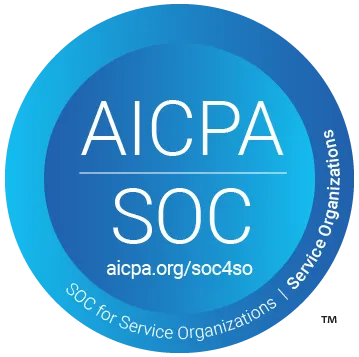QA Automation Trends in 2025: Everything You Need to Know

What is QA automation going to be like in the near future?
Future Market Insight research has shown that the automation testing market is expected to reach $166.91 billion by 2033. This growth projection shows that the software testing world is increasingly focused on QA automation.
This article will keep you up with the latest automation trends in 2025, that keep your QA strategy as cutting-edge as possible.
Top 10 QA Automation Trends in 2025
Here are some of the most popular innovations that are shaping quality assurance in 2025:
1. Increased AI-driven QA Transformation
The integration of AI into the QA processes opened up a new frontier trend. The latest research shows that nearly 8 out of 10 software testers now use AI to enhance their productivity.
In the next decade, our AI technologies will become more complicated and advanced. This will boost the AI-driven QA solutions to become even more precise and automated for testing the speed and quality of software.
2. The Rise of Self-Healing Tools
Self-healing tools are gradually becoming the norm in QA automation, addressing the problem of maintaining tests.
The application of self-healing tools increases as the software complexity rises.
With these tools in place, we can automatically verify when tests break, and sometimes even fix them, which allows tests to run without full interference from engineers.
Join the QA Revolution
Sign up for the latest AI and QA technology updates!
Work Email*
I want to subscribe to*
- Product Updates
- News and Resources
3. Advancements in Blockchain Testing
Due to the nature of blockchain-wide applications – often related to financial transactions and high-sensitive information – functional security testing will become one of the major testing types.
Although, we still have a long way to go here considering that only 6 out of 45 crypto wallet brands have undergone penetration testing.
Blockchain networks need to handle high volumes of transactions and automated tools can simulate these high transactional volumes to find bottlenecks.
4. Growing Demand for Low-Code/No-Code Testing Platforms
Anybody can use low-code/no-code testing platforms to create automated tests. Users don’t need to have coding skills to execute tests.
This increases productivity as QA teams can create and execute tests at great speed, without time-consuming coding.
Platforms like QA.tech and Katalon Studio are at the forefront of this growing movement, providing user-friendly interfaces and visual workflows to simplify test case creation.
5. Improved IoT Testing
IoT’s pace has been relentless from 13.8 billion devices in 2021, to Statista forecasting at least 30.9 billion connected ‘things’ by 2025.
These sensors and smart devices come in various forms requiring dedicated test approaches.
A QA automation tester plays a key role in verifying the interoperability and security of these devices across vast hardware settings and communication protocols.
A big priority for IoT will be to ensure security because of the vulnerabilities present in the interconnected networks.
6. The Growth of Hyper Automation Testing
Hyper automation is the application of advanced tools and technologies, such as AI, machine learning, and robotic process automation (RPA), to automate complex business processes
This type of automation can leverage multiple testing tools and technologies to create a unified, seamless end-to-end automated testing process.
This enables faster and more accurate testing, but it also means greater testing scope. The leading companies in this intelligent automation are notably UiPath and Automation Anywhere.
7. Increased Focus on Shift-Left Testing
Another trend will be shift-left testing – where testing activities are integrated into the cycle earlier.
This approach is important because defects found early are cheaper to remediate than those discovered in later stages of the software development lifecycle.
Moreover, shift-left testing encourages better collaboration and communication between development, QA, and operations teams.
It also fosters greater transparency, continuous feedback, and an organizational learning culture. Developers and testers have more time to identify problems before they become critical.
8. Headless Browser Testing
Headless browser testing has been running faster tests without a GUI and with fewer system resources, as no graphical interface has to be managed.
This is a big advantage for large test suites and frequent testing cycles, to save time due to reduced overhead.
Leaving aside speed, headless browser testing requires much manual effort out of continuous testing, improving test coverage within a tight testing window.
More importantly, it pairs nicely with the agile and DevOps practices that are critical to modern software development.
9. Focus on Test Environment Simulation & Green Computing
Green computing involves reducing power consumption on the test lab equipment as well as efforts to reduce carbon footprints.
Virtualized and cloud-based testing environments are becoming popular because they are highly scalable and relatively more energy-efficient.
Furthermore, development teams can use virtualization tools to recreate these test environments efficiently and at scale, providing them with the necessary resources while limiting their consumption.
Prioritizing green computing practices is instrumental in helping organizations reach their sustainability goals, as well as reducing costs and maximizing efficiency in operations.
10. The Rise of End-to-End Automation for APIs
Given the relevance of APIs in today’s software architectures, a pragmatic model for API testing is needed to meet the new demands placed on software.
As a result, API testing is gaining traction and will become even more critical for enterprise application developers. This type of testing will help APIs behave well under heavy performance conditions, and remain secure from various security threats.
Top QA automation tools like QA.tech, SoapUI, and RestAssured are becoming indispensable for creating, executing, and maintaining these tests efficiently.
Challenges in Adopting New Automation QA Trends
The adoption of new automation QA trends creates some challenges for organizations. Some of the major challenges these companies face include:
1. Skill Gap and Training
The skill gap relative to existing QA teams is the most significant challenge most companies face while adopting new automation QA trends.
For example, it might be challenging to hire people with a specialized skill for AI-driven testing because only a few people are proficient with advanced automation tools for now.
The solution is to invest in training and ongoing learning opportunities. Such resources can upskill current employees, hire new talent with the required skill sets, as well as involve external specialists on an ad hoc basis.
Finally, fostering a culture of continuous learning can keep teams up to date with developments and advancements in QA automation.
2. High Initial Investment
Advanced QA automation systems demand high upfront investment in software, hardware, and training assets, a big challenge for many small and medium-sized enterprises (SMEs).
Organizations can solve this by calculating the long-term ROI of those investments. Showing the costs saved by quicker development, less manual QA testing, and quicker release cycles will validate the upfront costs to investors.
“It’s great to welcome these impressive investors who see the same incredible potential in the product as we do,” says Daniel Mauno Pettersson, CEO of QA.tech as the company raises €3 million to continue product development.
Another option is to consider using cloud-based solutions and open-source tools to mitigate costs.
3. Integration with Existing Systems
Bringing automation into existing systems and workflows takes time and effort. Legacy systems might not play nicely with the latest automation tools at first.
Use a phased rollout strategy to control integration issues. Scaling up to national and organizational levels can be done more safely by piloting the new tools and determining their interoperability
4. Maintaining Test Scripts
Sometimes testers will need to modify the test scripts due to bugs in the application or the need to keep up with evolving business rules.
This change will necessitate creating entirely new tests. Unfortunately, as applications grow more complex, it becomes increasingly difficult to keep up with the changes and continuously update the test scripts when the application itself is frequently changing.
One step that could mitigate this challenge is the adoption of self-healing test automation. Such tools automatically modify test scripts to fit with changes to the application, doing away (at least to a degree) with the need for manual script updates.
5. Ensuring Test Data Security
As data privacy and cybersecurity become pressing concerns, managing and securing test data is emerging as a critical issue.
The very data that a company is testing makes it a high-value target for cyberattacks; to meet regulatory requirements such as GDPR and CCPA, personal data must be protected while in use.
Strong test data management coupled with data masking and synthetic data generation helps to safeguard this information and ensure that test data complies with regulatory requirements.
Join the QA Revolution
Sign up for the latest AI and QA technology updates!
Work Email*
I want to subscribe to*
- Product Updates
- News and Resources
Conclusion
Technological advances and evolving future industry needs will drive various trends in QA. This includes self-healing tools for QA, blockchain testing, hyper-automation, and AI-driven QA.
To stay relevant and competitive, QA teams need to be aware of these trends and must adopt the corresponding tools and strategies as they emerge.
Of all the trends influencing QA, AI is going to be one of the most transformative because it will change how we conduct QA. Product teams will become much more effective and efficient by leveraging AI. Consider exploring QA.tech to see the different ways to leverage AI in your testing.

Stay in touch for developer articles, AI news, release notes, and behind-the-scenes stories.

